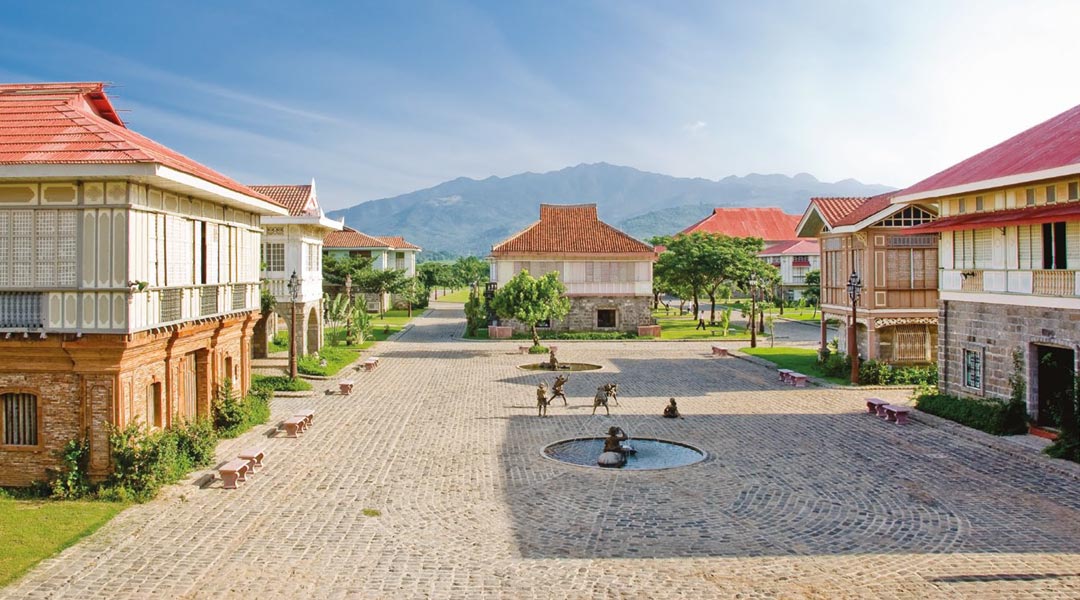
Staying in Heritage: Revisiting the Las Casas Filipinas de Acuzar in Bagac, Bataan
You’ve seen it in the local TV series, Zorro. You’ve read about it in tantalizing articles published by the national dailies. You could visit and stay in what previously a private compound dedicated to the heritage-filled vision of Las Casas in Bataan owner, Jose “Jerry” Acuzar of San Jose Builders.
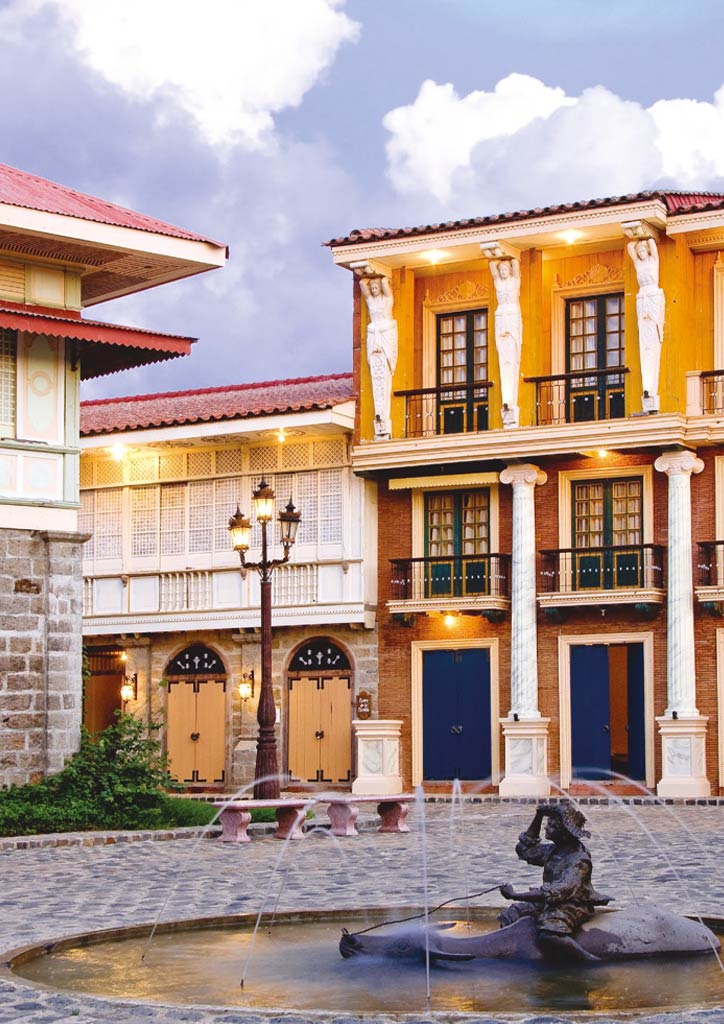
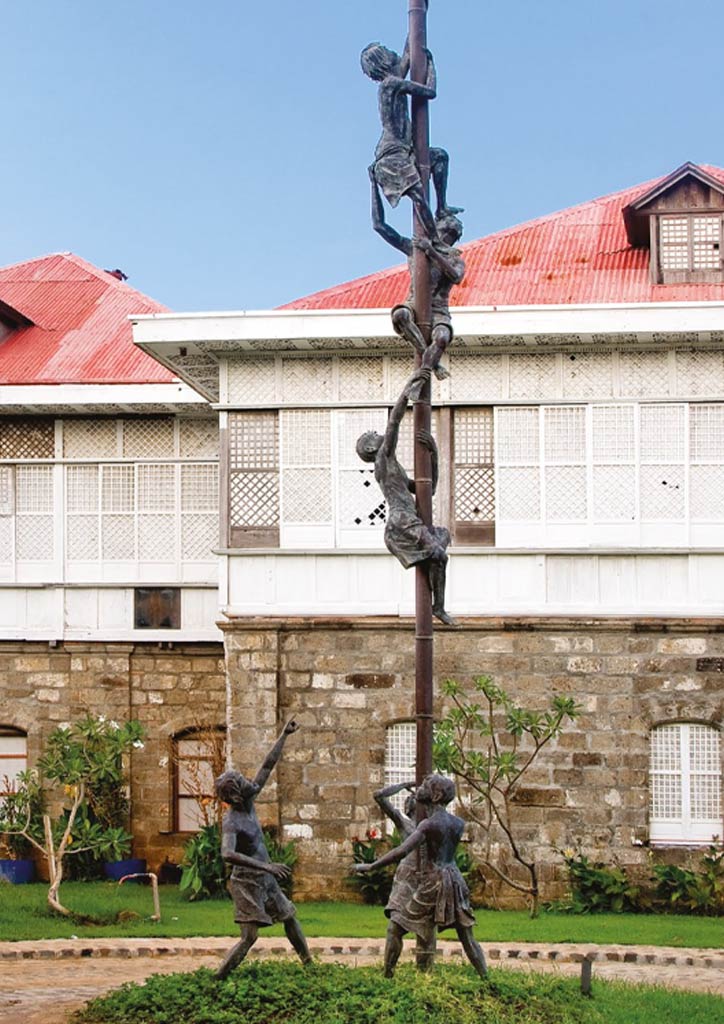
Preserving Heritage Through Architecture
Las Casas Filipinas de Acuzar, managed by Genesis Hotels and Resorts Corporation, is located in Bagac, Bataan. It is four hours by road from Manila, and is that province’s newest and certainly most upscale beachside resort. Las Casas is an outcome of an organic process of selecting and emplacing salvaged ancestral houses from all over Luzon. It’s back ringed by the forests of nearby Mount Natib and its front splashed by the South China Sea. Acuzar, an architect of humble origins, has memories of passing by the decaying mansions along F.R. Hidalgo Street in Quiapo on his way to school. It proved pivotal in his decision to transplant endangered specimens of colonial heritage architecture to his beachfront property.
READ MORE: Heritage lost, found, and reborn: The Escuela de Bellas Artes in Bagac, Bataan
Away from the bonfires of progress, ancient wood, tile, and stone structures were given a new lease in life. They reincarnated as vacation houses, offices, restaurants, and hotel suites and facilities in Las Casas. It is currently accessible from the southeast through a two-lane road from the poblacion of Bagac. The Bataan resort lies in a vast sand-filled estuary bisected near the beach by a small river, with seaside farms stretching off to the north. The resort features a frontage with a vast, open-air depository of planks, stone blocks, and tiles salvaged from their original owners or bought from junk shops in Manila. Additionally, the gated stone entrance, jauntily carrying the resort’s elaborate coat of arms on its keystone, welcomes visitors while enclosing the property like the walls of Intramuros.
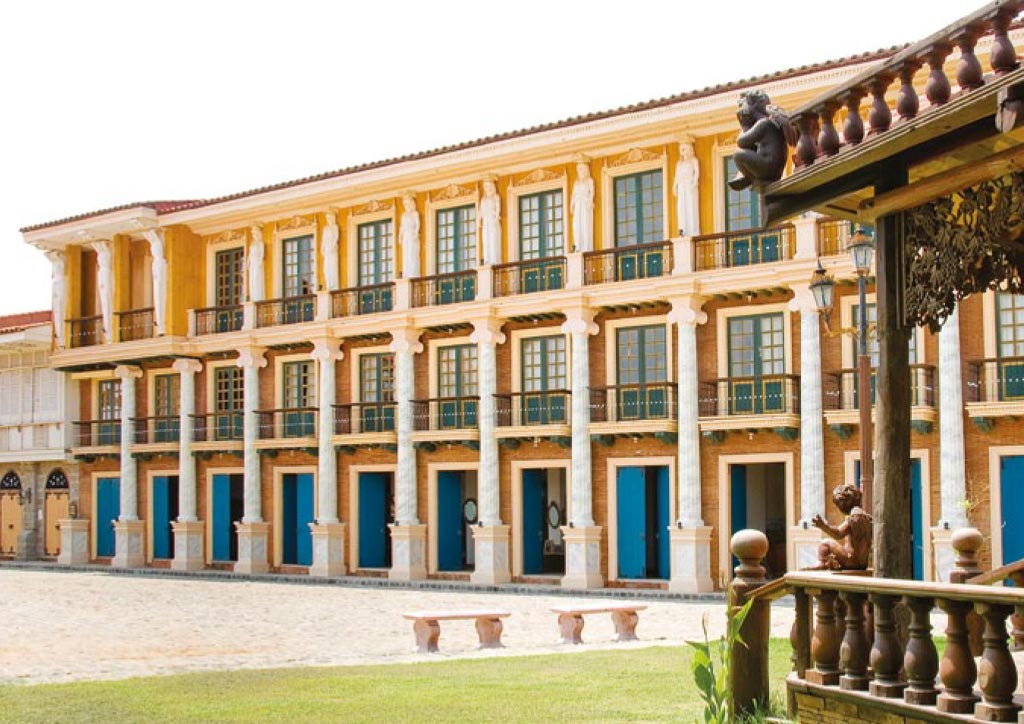
A Welcoming Heritage Site
Unlike Intramuros, the compound is expansive and warm because of the wide streets of cobblestone. Also the large lots rimmed with cobblestoned sidewalks. These are augmented in good measure with front lawns and trees. They soften architectural lines, so it creates an antebellum atmosphere.
Streetlamps reproduced from designs of the 1880s dot the streetscape and frame the house blocks and plazas. Three major plazas define the spatial arrangement of the complex. Plaza Atienza and Plaza Belmonte are stone-paved and bordered by structures on the south side of the complex. The grass-carpeted Plaza Mayor de Tobias on the north is large enough for helicopters to land upon. Future plans include a complex-wide tranvia system that will allow guests to ride from end to the other on rail-mounted streetcars.
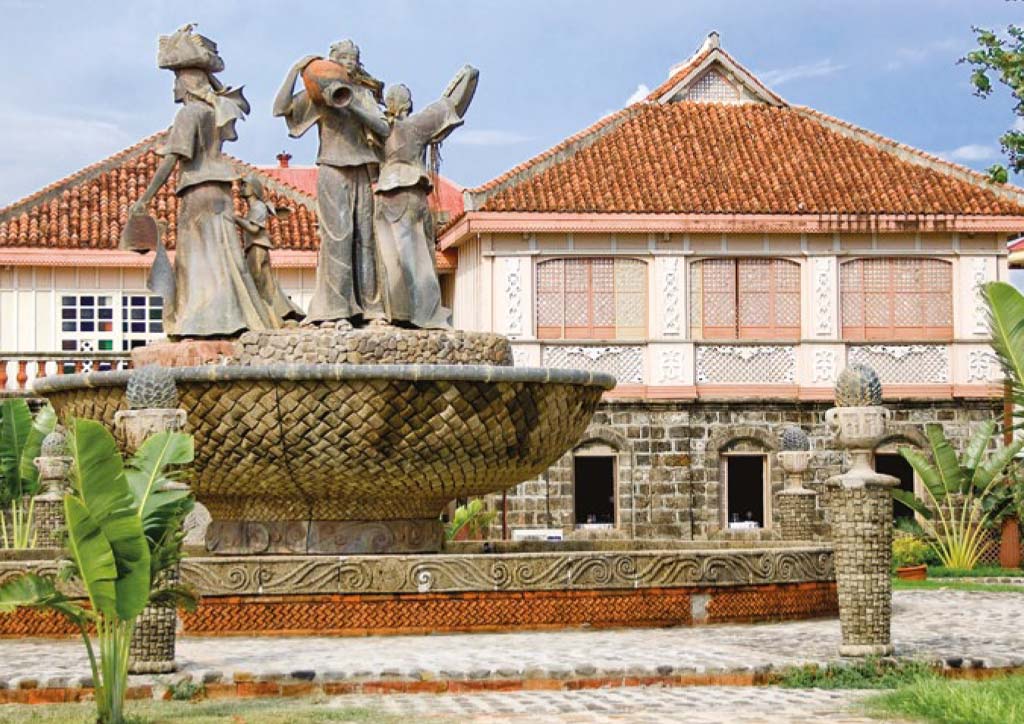
Furthermore, a welcome feature of the complex is art in open spaces that encourage people to linger outside their accommodations. Sculptures of children playing local games like palo sebo, patintero, luksong tinik and tumbang preso encourage the young to try the highly physical and social diversions that their parents and grandparents once played. The use of fountains and reflecting pools in addition to the sculptures also relax the boundaries between art and audience by inviting them to stay near these cool areas to converse and pass the time.
YOU MIGHT LIKE: Heritage travel from home: 5 virtual heritage tours to explore amidst the COVID-19 pandemic
A Place For Art and Relaxation in Bataan
Six of the resort’s 20 structures are for accommodations. For example, the rebuilt heritage houses called Casa San Miguel, Casa Binondo I, II and III, and Casa Meycauayan offer spacious accommodations for guests who wish to rent an entire house. Butler service is also in place for those who wish to avail of these high-end accommodations.
Meanwhile, Paseo de Escolta, a recreation of a turn-of-the-century colonnaded shop building with hotel suites on the second and third floors, is available in single-bedroom or split-level single bedroom configuration. The elegant Casa Candaba, a heritage house famed for its classic lines, where many period films have been shot in its interiors, on the other hand, is set to become the complex’s largest single house accommodation.
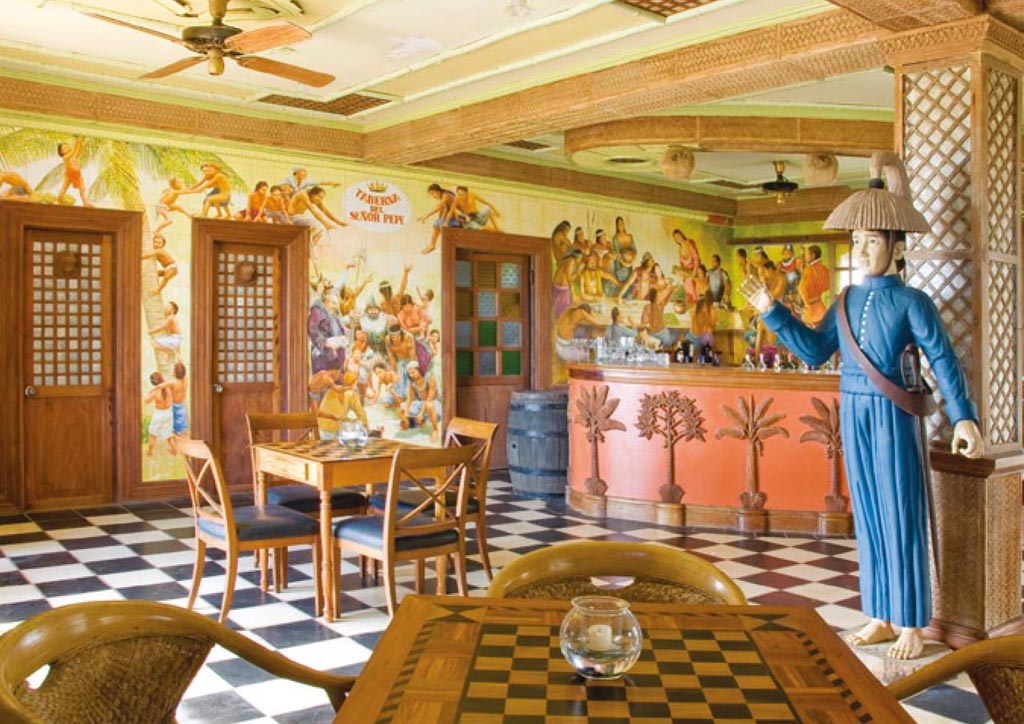
For entertainment and service facilities, Las Casas Filipinas de Acuzar has an entire heritage house as its front desk office, in the form of Casa Mexico. Food and drink are also available at Café Marivent, housed in the historic Casa Unisan. The nearby Casa Jaen I and II are for receptions and meals for large groups while the ground floor of Casa Baliuag I contains the Taberna del Señor Pepe, the complex’s bar.
Moreover, Casa Luna will be the complex’s official archives and in-house library. For recreation, Casa Lubao contains the complex’s game room. Nearby, the noble Casa Hidalgo contains the main reception area and activity center for guests, such as art sessions conducted underneath the very roof where National Artists Amorsolo and Tolentino once studied.
Lastly, along the beach, three rustic all-wooden houses called the Casas Cagayan house the Hilot Center that employs traditional Filipino massage. One of the complex’s few outdoor concessions to modernity is the La Piscina Swimming Pool, which borders the river delta and follows the riverbank as it undulates towards the sea.
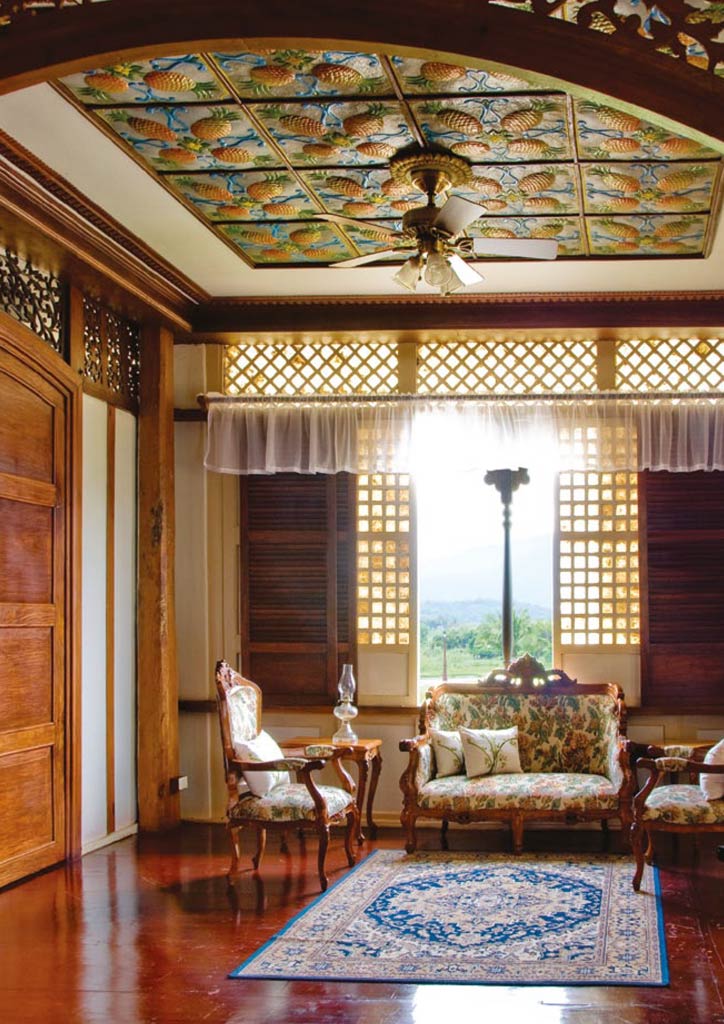
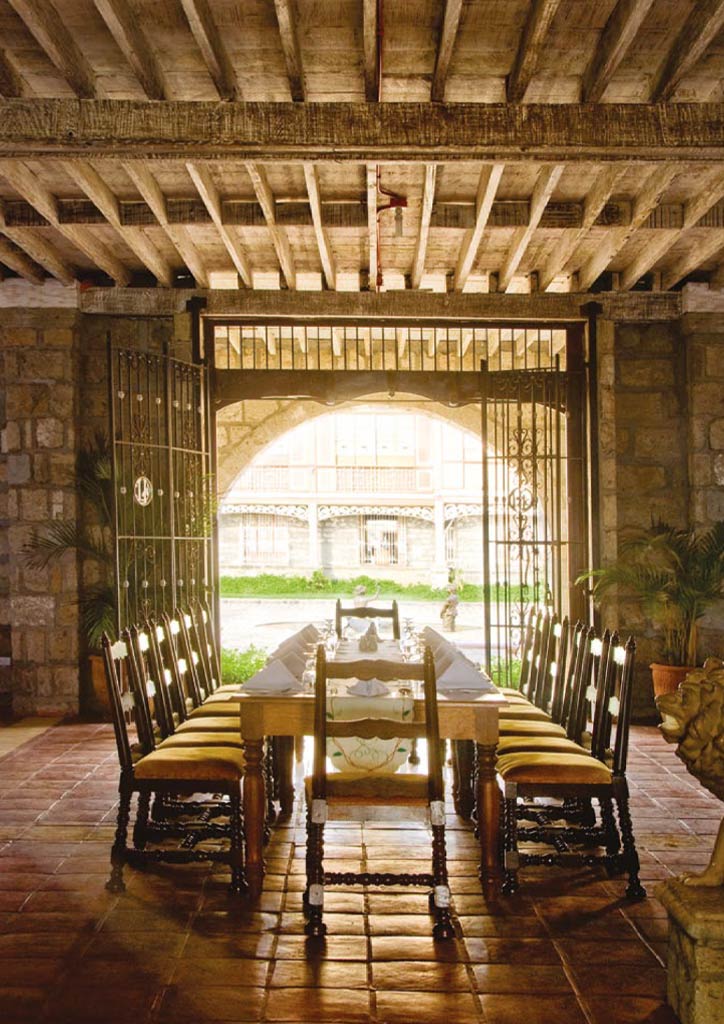
More Spaces To Look Forward To
The second phase of Las Casas is nearing completion along the beachfront side and connected to the main complex via a stone bridge crossing the river. Plans include building a stone church inspired by a colonial-era structure. There will also be Binondo or Quiapo-style houses lining up on either sides of the river with stone azoteas jutting out into the water. Here, guests can board traditional bancas to cruise along the river and into the sea.
A fantasy land that fuses cultural heritage, up-to-date resort accommodations, and facilities, the Las Casas sells the experience of living in the past. It is a unique and colossal manifestation of one man’s dream to rest contentedly amongst ancestral houses. Ultimately, it is an interpretation of the phrase “adaptive reuse of heritage structures” writ very large indeed.
This article first appeared in BluPrint Volume 5 2010 with edits made for BluPrint online.
Visit the Las Casas website to know more about the accommodations and activities in this heritage resort in Bataan.
READ MORE: Cebu’s well-loved Casa Gorordo museum demonstrates the openness of heritage houses


